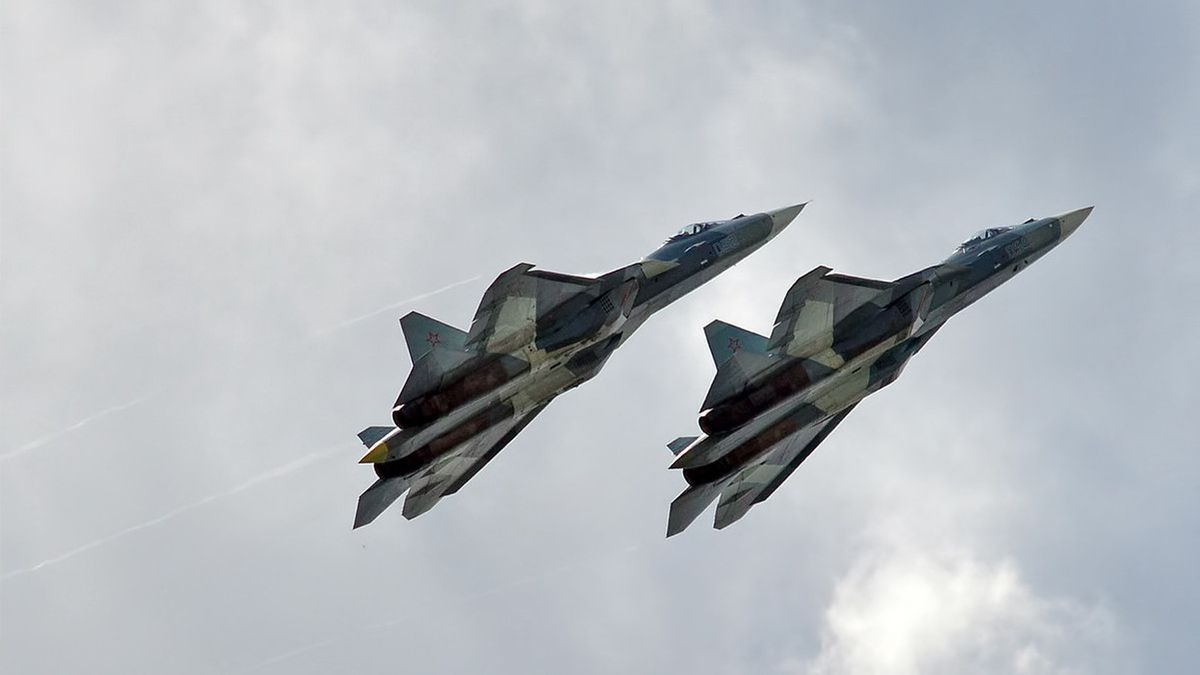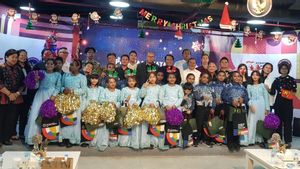JAKARTA - Russia continues to develop the capabilities of their fifth-generation advanced fighter jet, the Sukhoi Su-57. Most recently, this fighter jet is capable of carrying four attack drones, a capability that has attracted five ASEAN countries to operationalize it.
Not just any attack drone, but the latest heavy attack drone of the Okhotnik type. Later, Su-57 pilots could operate four drones at once, simultaneously, an industry source said.
"Currently, the option to control attack drones from the cockpit of the Su-57 is being worked out. A fighter jet is expected to carry two to four Okhotnik drones," the source said, as reported by TASS, although there is no official Russian government information on this.
As Russia's United Aircraft Corporation (UAC) press office previously told TASS, the new Okhotnik drone will strike both air and ground targets in a network-centric interaction with the Su-57 fighter.
In their joint work with fifth-generation fighter aircraft, the Okhotnik drones will handle a wide range of tasks, striking both air and ground targets under the command of Sukhoi Su-57 pilots.
Coupled with its combat capabilities, the Su-57 will be increasingly feared by Western countries, but it is in demand by countries who want to find alternative advanced fighter aircraft, along with the ability to carry attack drones.

Like the five Southeast Asian countries (ASEAN) which are said to have shown interest in the Su-57. The news that came not from random people, but the CEO of the Russian state armaments company, Rosoboronextport Aleksandr Mikheyev last June 1st.
"We are in negotiations with several countries. We are seeing demand and interest. Southeast Asia, four or five countries (showing their interest)," he explained.
Deadly duetThe Sukhoi Su-57 is a Russian-made fifth-generation multi-role fighter designed to destroy all types of air, ground and sea targets. The Su-57 fighter jet features stealth technology with extensive use of composite materials, is capable of developing supersonic cruising speeds, and is equipped with the most advanced onboard radio-electronic equipment, including a powerful onboard computer (the so-called electronic second). pilot), a radar system spread throughout its body and several other innovations, in particular, the armaments housed in its fuselage.
The Su-57 took to the air for the first time on January 29, 2010. Compared to its predecessor, the Su-57 combines the functions of an attack aircraft and a fighter jet. The use of composite materials and innovation technology and fighter aircraft. The aerodynamic configuration ensures a low level of radar and infrared signature.
The aircraft's armament will include, in particular, hypersonic missiles. The fifth-generation fighter jet has been successfully tested in combat conditions in Syria.

Meanwhile, the S-70 Okhotnik drone, developed by the Sukhoi Design Bureau, features stealth technology and a flying wing (no tail) design, which reduces its radar signature. According to open source data, this drone has a take-off weight of 20 tons and can develop a speed of around 1,000 km/h.
The Okhotnik heavy attack drone made its debut flight on August 3, 2019. The flight lasted more than 20 minutes under operator control.
On 27 September 2019, Okhotnik made a joint flight with the Su-57 fifth generation fighter jet. The drone maneuvers through the air in automatic mode at an altitude of about 1,600 meters and the flight lasts 30 minutes.
With the capabilities possessed by both, the Su-57 and S-70 are able to present a deadly duet in the air that opponents fear. Unfortunately, Aleksandr Mikheyev did not elaborate further which ASEAN countries were interested in buying the Su-57, including whether Indonesia was included in it.
The English, Chinese, Japanese, Arabic, and French versions are automatically generated by the AI. So there may still be inaccuracies in translating, please always see Indonesian as our main language. (system supported by DigitalSiber.id)








